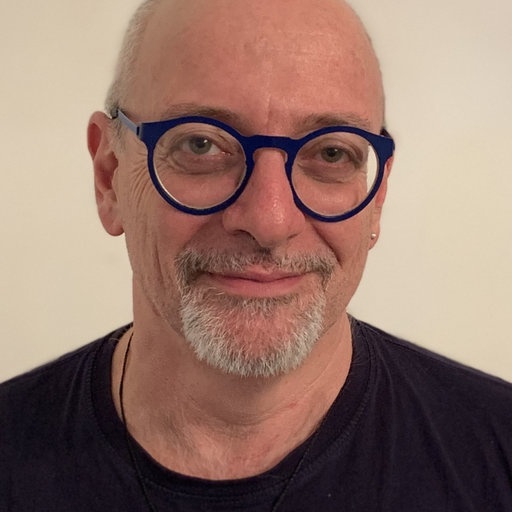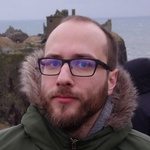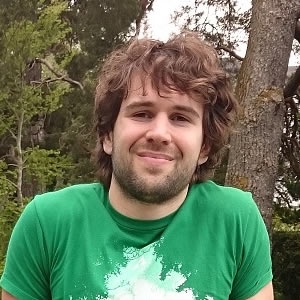Neuro-Topology is a new and exciting branch of applied algebraic topology which aims to investigate questions and data arising in neuroscience by topological means.
The Aberdeen Neuro-Topology Research Group is a part of the Institute of Mathematics at the University of Aberdeen. The group was established by Ran Levi in 2017 and is funded by an EPSRC grant – Topological Analysis of Neural Systems, and a collaboration agreement with the Blue Brain Project in EPFL, Switzerland.
In our research we aim to use any applicable tool in the arsenal of algebraic topology, geometry, algebra and combinatorics to gain information about natural and artificial neural networks, as well as analyse data that arises in neuroscience by topological means.
- People
-
Members of the group

Head of groupInterests and specialisation: Algebraic Topology, Homotopy Theory of classifying spaces of finite groups, Applications of topology and geometry to neuroscience and other networks, Classical Homotopy Theory, Representation Theory of finite groups and interactions with homotopy theory.
Matthew Burfitt
Reseach AssociateInterests and Specialisation: Background in algebraic topology and unstable homotopy theory. Currently interested in applications of topology to data analysis and machine learning. In particular topological data analysis and applications to the geometry and topology to artificial neural networks, neuroscience and brain data. A major part of my current work is collaborating on the PUFFINS study to develop method for analysing data coming from fast field cycling MRI.
Luigi Caputi
Research associate:Interest and specialisation: background in Algebraic Topology and Coarse Geometry. In particular, coarse and cyclic homology theories, stable homology, algebraic K-theory and trace maps. Currently interested in applications of (persistent) homology, homotopy and category theory to graphs and complex systems, more specifically to neuroscience and brain dynamics.

Honorary Research associate:Interests and specialisation: Algebraic and Combinatorial Topology, Persistent Homology and Topological Data Analysis (with Applications to Neuroscience), Unimodal Category, Covering Type, Sheaf Theory. Enumerative and Algebraic Combinatorics.
Henri Riihimäki

Research associateInterests and specialisation: Background in applied topology. Particularly persistent homology, machine learning and data analysis on topological and combinatorial data. Currently looking into topology and algebra of combinatorial structures and discrete curvature on networks with a focus on functional brain networks.

Honorary Research associateInterests and specialisation: Combinatorics and Applied Topology. In particular, poset topology, graph theory, persistent homology, permutation patterns, and the Abelian Sandpile model.
Pedro Rodrigues
Postgraduate student
Interests and specialisation: Pedro is a PhD student interested on Algebraic Topology, Topological Combinatorics, Geometric Group Theory and applications. He is currently working on the preservation of algebraic structures of (co)homology groups under Morse-type reductions.

Jānis Lazovskis
Honorary Research associateInterests and specialisation: Topological data analysis, Sheaf theory, Stratified spaces of simplicial complexes, Visualization of topological data.
- Papers and Talks
-
Theoretical papers and preprints
- Daisuke Kishimoto, Ran Levi, Polyhedral products over finite posets (2019) To appear in Kyoto Journal of Mathematics.
- Wojciech Chacholski, Ran Levi, Roy Meshulam, On the topology of complexes of injective words. J Appl. and Comput. Topology (2019).
- Kouyemon Iriye, Daisuke Kishimoto, Ran Levi, Characterisation of polyhedral products with finite generalised Postnikov Decomposition, Forum Mathematicum (2020)
Applied papers and preprints
- Daniel Luetgehetmann, Dejan Govc, Jason P Smith, Ran Levi , Computing persistent homology of directed flag complexes Algorithms 2020, 13(1), 19.
- Reimann MW, Nolte M, Scolamiero M, Turner K, Perin K, Chindemi G, Dlotko P, Levi R, Hess K, Markram H, Cliques of Neurons Bound into Cavities Provide a Missing Link Between Structure and Function, Frontiers in Computational Neuroscience, vol.11, 48 (2017).
- Lida Kanari, Pawel Dlotko, Martina Scolamiero, Ran Levi, Julian Shillcock, Kathryn Hess and Henry Markram, A Topological Representation of Branching Neuronal Morphologies. Neuroinform 16, 3–13 (2018).
- Janis Lazovskis, Stratifications on the Ran space (2019).
- Henri Riihimäki and José Licón-Saláiz, Metrics for Learning in Topological Persistence, International Workshop on Applications of Topological Data Analysis, in ECML-PKDD 2019, Würzburg, Germany.
- Wojciech Chachólski and Henri Riihimäki, Metrics and Stabilization in One Parameter Persistence. SIAM J. Appl. Algebra Geometry, 4(1), (2020) 69–98.
- Dejan Govc, Richard Hepworth, Persistence Magnitude (2021).
- Dejan Govc, Waclaw Marzantowicz, Petar Pavesic, How many simplices are needed to triangulate a Grassmannian? (2019)
- Dejan Govc, Ran Levi, Jason P Smith, Complexes of Tournaments, Directionality FIltrations and Persistent homology (2020).
- Dejan Govc, Computing Homotopy Types of Directed Flag Complexes, (2020)
- M. J. Catanzaro, Justin M. Curry, B. T. Fasy, Janis Lazovskis, G. Malen, H. Riess, B. Wang, M. Zabka, Moduli space of Morse functions for persistence; J. Appl & Comp. Topology (2020)
- Henri Riihimäki, Wojciech Chachólski, Jakob Theorell, Jan Hillert, Ryan Ramanujam; A topological data analysis based classification method for multiple measurements (2020).
- Dejan Govc, Jason P. Smith; Asymptotic Behaviour of the Containment of Certain Mesh Patterns (2020)
- Luigi Caputi, Anna Pidnebesna, Jaroslav Hlinka; Promises and pitfalls of topological data analysis for brain connectivity analysis (2021)
- Luigi Caputi, Carlo Collari, Sabino Di Trani; Multipath cohomology of directed graphs (2021)
- Luigi Caputi, Carlo Collari, Sabino Di Trani; Combinatorial and Topological Aspects of Path Posets, and Multipath Cohomology; (2021)
- Pedro Conceição, Dejan Govc, Jānis Lazovskis, Ran Levi, Henri Riihimäki, Jason P. Smith; An application of neighbourhoods in digraphs to the classification of binary dynamics; (2021) To appear in Network Neuroscience.
- Michael W. Reimann, Henri Riihimäki, Jason P. Smith, Jānis Lazovskis, Christoph Pokorny, Ran Levi; Topology of synaptic connectivity constrains neuronal stimulus representation, predicting two complementary coding strategies; (2021) To appear in Plos One.
- Luigi Caputi, Daniele Celoria, Carlo Collari; Categorifying connected domination via graph überhomology; (2021)
- Luigi Caputi, Daniele Celoria, Carlo Collari; Monotone cohomologies and oriented matchings; (2022)
- Henri Riihimäki, Simplicial q-connectivity of directed graphs with applications to network analysis; (2022)
- Pedro Conceição, Juliano Morimoto, ‘Holey’ niche! finding holes in niche hypervolumes using persistence homology; (2022)
Selected Talks and Presentations
- Poster: An application of neighbourhoods in digraphs to the classification of binary dynamics; Topological Data Analysis Workshop; Institute for Mathematical and Statistical Innovation, 27/4/2021
- Janis Lazovskis, EPSRC Hub Seminar, Topological Patterns in Data, University of Aberdeen, 14.9.2019.
- Ran Levi, Complexes of Tournaments in Directed Networks, Royal Holloway University, 19.02.2020.
- Ran Levi, Combinatorial Structures in Neural Networks, Fields Institute, 15.06.2020 (Video)
- Daisuke Kishimoto, Ran Levi, Polyhedral products over finite posets (2019) To appear in Kyoto Journal of Mathematics.
- Software
-
Software created in the group
flagser: Computing the homology of directed flag complexes.
- Created by: Daniel Lütgehetmann, Jason P Smith
- github repository and technical description
- Flagser Live: An online implementation of Flagser (by Jason Smith)
flagser count: A program for counting directed cliques in directed graphs, adapted from Flagser
- Created by: Jason P Smith
- github repository
tournser: Computing the persistent homology of tournaplexes
- Created by: Jason P Smith
- github repository
deltser: Computing the homology of delta complexes (semi-simplicial sets)
- Created by: Jason P Smith
- gihub repository
easy-mapper: A user-focused Python implementation of the mapper algorithm.
- Created by: Jānis Lazovskis
- github repository
- Links
